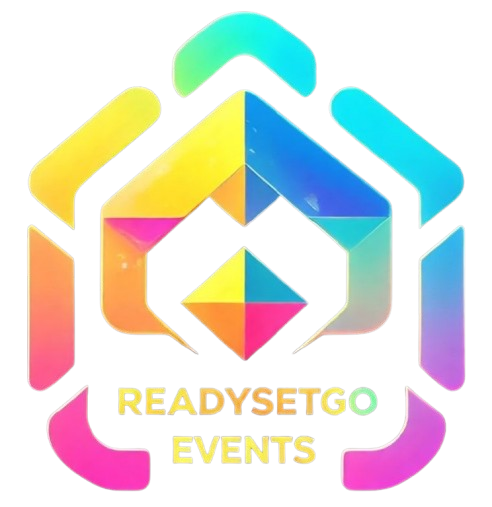Throughout human history, symbols have served as powerful gateways to understanding the mystical and the unknown. From ancient hieroglyphs to modern logos, symbols embody complex meanings and evoke feelings of wonder, curiosity, and transcendence. This article explores how symbols function as essential elements in cultivating our fascination with mystical themes, their psychological impact, and their modern manifestations across media, entertainment, and branding.
1. Introduction: The Fascination with Mystical Symbols and Themes
Symbols are universal elements embedded in human culture, transcending language and geography. They include images, signs, or objects that represent ideas, beliefs, or concepts. Examples range from religious icons like the cross or the Om symbol to cultural emblems like the yin-yang or the Egyptian ankh. Such symbols serve as visual shorthand for complex spiritual or mystical ideas, making them accessible and memorable across generations.
The psychological and cultural appeal of mystical themes stems from their ability to provide a sense of connection to something greater than ourselves. Mystical symbols often tap into deep-seated archetypes—universal patterns of human experience—that evoke emotions like awe, reverence, and curiosity. They act as gateways to mystical experiences, allowing individuals to access a realm beyond ordinary perception.
2. The Role of Symbols in Cultivating Mystical Attraction
Symbols carry hidden meanings and latent power, often serving as carriers of spiritual or mystical energy. For example, the lotus flower in Eastern traditions symbolizes purity and spiritual awakening, while the ouroboros—a serpent eating its tail—represents eternity and cyclical renewal. Such symbols are believed to embody mystical forces that influence human consciousness at a subconscious level.
Research in psychology suggests that symbols influence our emotions and perceptions deeply, often bypassing rational thought. When we see certain symbols repeatedly, our brains start associating them with specific feelings or ideas, reinforcing their mystical allure. Across cultures, powerful symbols like the Star of David, the Eye of Horus, or the Mandala serve as visual anchors for spiritual practices and mystical experiences.
3. Cognitive and Emotional Drivers Behind Attraction to Mystical Symbols
Humans have an innate desire for meaning and transcendence. We seek answers to profound questions about existence, purpose, and the universe. Symbols act as catalysts in this quest by providing visual representations of abstract concepts, making the intangible tangible.
Carl Jung’s theory of archetypes and the collective unconscious further explains this fascination. According to Jung, certain symbols resonate universally because they emerge from shared human experiences—like the hero’s journey or the wise old man. These archetypal symbols evoke curiosity and wonder, inviting us into a deeper understanding of ourselves and the cosmos.
For instance, the mysterious aura surrounding the Egyptian scarab or the Celtic knot stirs curiosity and a sense of mystery, encouraging exploration and personal reflection.
4. Modern Manifestations of Mystical Symbols in Media and Entertainment
In contemporary media, symbols continue to evoke mystical allure. Films, literature, and video games frequently incorporate iconic symbols to deepen immersion and emotional engagement. For example, blockbuster movies like Indiana Jones or The Mummy use Egyptian symbols—such as scarabs or hieroglyphs—to evoke mystery and adventure.
The example of mummys jewels ohne anmeldung illustrates how modern storytelling and branding leverage symbols to create immersive experiences. Such symbols act as visual cues that transport audiences into mystical worlds, heightening curiosity and emotional investment.
Symbolism in media enhances narrative depth, making stories more engaging by tapping into subconscious associations rooted in cultural and personal symbolism.
5. Symbols and Their Impact on Player Behavior in Gaming Contexts
In the gaming industry, especially in slot machines and online casino games, symbols are central to gameplay mechanics and player psychology. Feature combinations—such as special symbols that trigger multipliers or bonus rounds—capitalize on our fascination with mystical themes. For example, treasure chests, mystical gemstones, or hieroglyphs are used to evoke adventure and luck.
The psychological impact of instant rewards—like buying features—mirrors the allure of mystical abundance, reinforcing perceptions of luck and destiny. When players see symbols associated with wealth or mystical power, their perception of control and possibility increases, influencing their behavior and engagement.
Designers intentionally manipulate symbols to foster excitement and emotional investment, leveraging our innate attraction to mystical and mysterious imagery.
6. The Power of Symbolic Design in Branding and Marketing of Mystical-themed Products
Brands often incorporate mystical symbols to attract attention and foster emotional connections. The visual language of symbols like the eye, the flame, or ancient motifs can evoke feelings of power, mystery, and authenticity. Well-known examples include jewelry brands, luxury items, or entertainment franchises that utilize symbols to suggest exclusivity or spiritual depth.
A case in point is mummys jewels ohne anmeldung, where ancient Egyptian motifs are employed in product design to evoke historical mystique and allure. These symbols influence consumers’ perceptions of value and authenticity, often making products appear more meaningful or desirable.
Effective use of visual symbolism in branding creates a sense of connection, trust, and aspiration, turning simple products into carriers of mystical significance.
7. Non-Obvious Dimensions: Cultural Appropriation, Ethical Considerations, and the Depth of Mystical Symbols
While symbols can be powerful tools, their use raises important ethical questions. Superficial or inappropriate adoption of cultural symbols risks misappropriation, disrespect, and dilution of their original meanings. For example, commercializing sacred symbols like the Hindu Om or Native American motifs without understanding their cultural significance can perpetuate stereotypes and offend communities.
Respectful and authentic representation is essential. This involves understanding the cultural context and avoiding stereotypes, ensuring that symbols are used in ways that honor their origins and significance. Ethical marketing and storytelling should aim for cultural sensitivity and promote appreciation rather than appropriation.
8. Practical Insights: How to Recognize and Understand the Power of Symbols in Daily Life
Recognizing symbols that evoke mystical feelings involves paying attention to recurring motifs in media, art, and environment. For example, noticing the use of the spiral in architecture or the crescent moon in jewelry can signal deeper symbolic meanings related to growth, mystery, or femininity.
Strategies for personal use include incorporating meaningful symbols into daily routines—such as wearing a pendant with a symbol that inspires or meditating on symbols that evoke calm and curiosity. Understanding the psychological effects—like increased motivation or a sense of connection—can enhance personal development.
Being aware of how symbols influence perceptions allows us to navigate media and environments more consciously, enriching our experience and fostering a deeper sense of wonder.
9. Conclusion: The Enduring Appeal of Symbols and Their Role in Human Mystical Experience
Symbols have an enduring power to attract us toward mystical themes, serving as visual anchors that connect us with deeper layers of consciousness. They embody the universal human quest for meaning, transcendence, and connection to the divine or cosmic forces.
In a modern context, understanding the symbolism embedded in media, branding, and everyday objects enhances our ability to appreciate their depth and significance. As exemplified by contemporary products like mummys jewels ohne anmeldung, the use of ancient motifs continues to inspire wonder and curiosity, bridging timeless principles with current expressions.
“Symbols are the language of the soul, whispering secrets of the universe that beckon us toward mystical discovery.”
By recognizing and respecting the power of symbols, we can deepen our personal and collective experience of the mystical, fostering a sense of curiosity and transcendence that enriches modern life.

